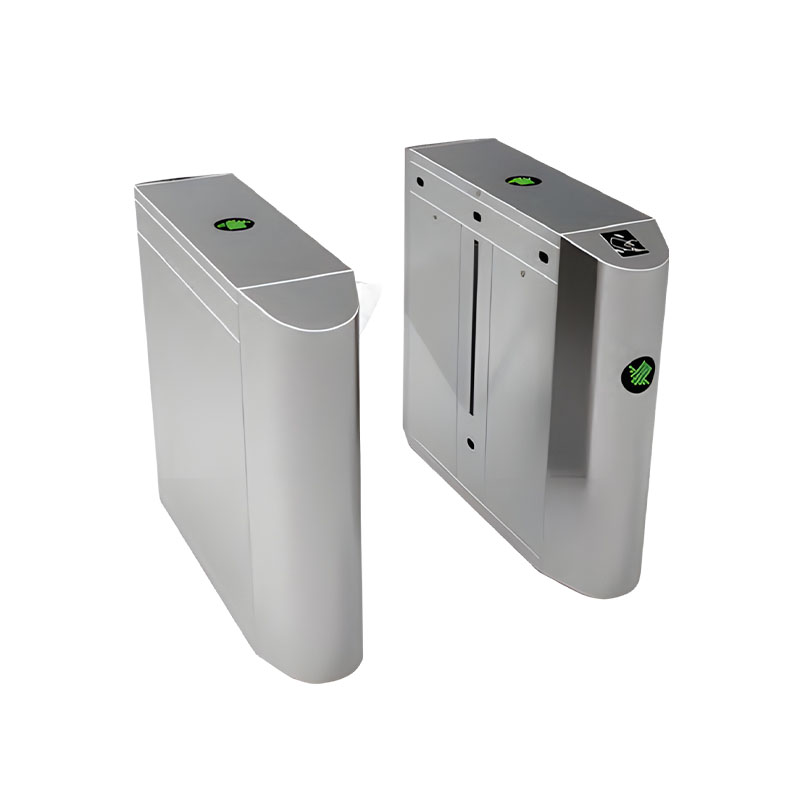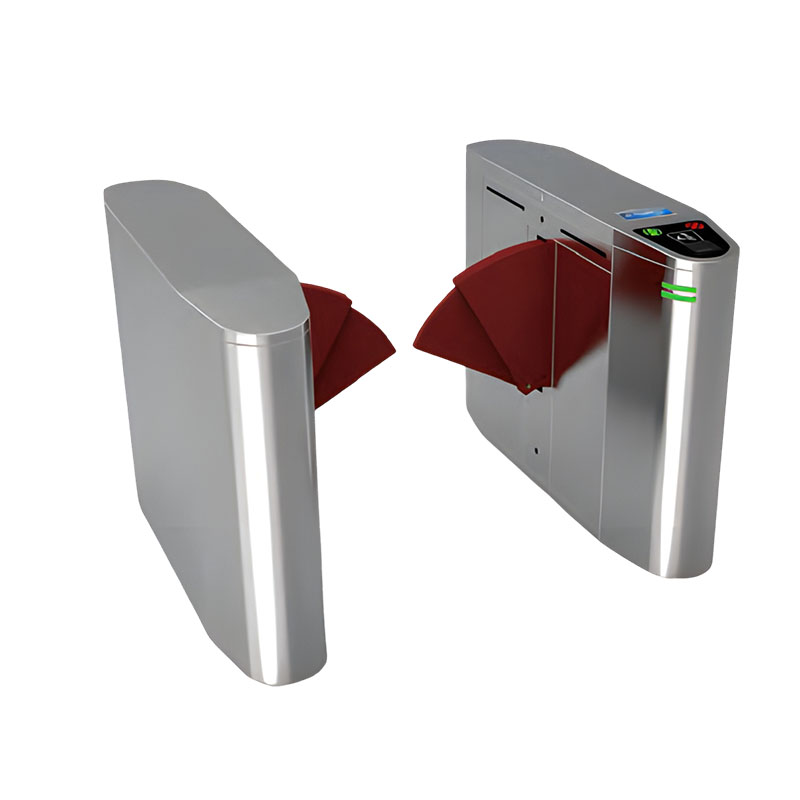How do pedestrian access gates prevent illegal intrusion and ensure area security?
Release Time : 2025-10-28
In modern security management, access control is the first line of defense for ensuring safety. With the advancement of security technology, pedestrian access gates have evolved from simple "blocking" tools to comprehensive security systems that integrate identity recognition, traffic management, and intelligent monitoring. Among these, "anti-tailgating" functionality has become a core indicator of a pedestrian access gate's security level. Tailgating refers to unauthorized individuals following legitimate cardholders and forcing their way through the gate without verification, posing a serious threat to facility security. To this end, advanced pedestrian access gates utilize multiple technologies to achieve precise anti-tailgating protection, effectively preventing illegal intrusion and providing solid security for various venues, including offices, transportation, finance, and education.
1. Infrared Array: Building a High-Density Sensing Network
The first line of defense against tailgating is precise detection capabilities. Modern pedestrian access gates typically feature multiple sets of infrared sensors embedded in the two columns, forming a crisscrossing "infrared light curtain." These sensors scan the space within the passage with millimeter-level accuracy. When a legitimate user passes through using a card or facial recognition system, the system records their path. If a second person is detected following closely into the light curtain, the system immediately identifies the user as tailgating, triggering an alarm and keeping the gate closed. The high-density infrared array effectively distinguishes between single, double, and even multiple users, even those very close together, ensuring no missed interception.
2. 3D Visual Recognition and AI Algorithms: Intelligently Identifying Behavior Patterns
To further enhance recognition accuracy, high-end access gates are equipped with 3D stereo cameras or depth sensing modules, combined with artificial intelligence algorithms, to achieve three-dimensional modeling and behavioral analysis of passersby. The system not only determines the number of people but also analyzes gait, height, distance, and speed. For example, while normal travelers typically maintain a certain distance, tailgating individuals often deliberately move in close proximity to those in front. By learning from extensive traffic data, the AI system can accurately distinguish between legitimate traffic and unusual behavior, significantly reducing false alarms and missed alerts, making tailgating prevention more intelligent and user-friendly.
3. Physical Structure Optimization: Strengthening Spatial Control Capabilities
In addition to electronic detection, physical design is also crucial for tailgating prevention. Passage gates feature a narrow channel structure, allowing only one person to pass through, physically restricting parallel or close passage. The wings of wing gates and swing gates close quickly after passing through, shortening the window for illegal entry. Full-height turnstiles completely seal the passageway, completely preventing climbing over and tailgating. Some gates also feature a "bounce back" function. When someone pushes hard, the wings automatically rebound and lock, preventing forced entry and enhancing overall security.
4. Audio and visual alarms and system linkage: enabling rapid response
Once tailgating is detected, the passage gate immediately activates an audio and visual alarm, emitting a warning sound and flashing red light to deter the intruder and alert on-site security personnel for prompt action. Furthermore, the system seamlessly integrates with video surveillance platforms and access control management systems to automatically capture images of violations, record the time and location of the incident, and push alarm information to the management center. This linkage mechanism not only improves emergency response efficiency but also provides a reliable basis for subsequent tracing and accountability.
5. Multi-mode operation to adapt to different security needs
The anti-tailgating system supports multiple operating modes to flexibly respond to different scenarios. In high-security areas, "strict mode" can be set, preventing subsequent users from activating the gate until the previous user has fully passed through and exited the inspection area. In visitor access, "double verification" mode can be enabled, requiring two consecutive valid authorizations before access is granted. The system also features an anti-passback feature to prevent multiple entry and exit by a single cardholder, eliminating loopholes such as unauthorized card swiping. Administrators can flexibly configure the system based on actual needs to achieve a balance between security and efficiency.
6. Balancing Safety and User-Friendly Experience
Advanced access gates enhance security while also prioritizing user experience. After authorized users swipe their cards, the gate opens smoothly, ensuring smooth passage. Anti-pinch protection ensures the safe passage of the elderly, children, and those with luggage. Accessible access gates can be opened with facial recognition or remote control to accommodate special needs. Anti-tailgating features effectively deter unauthorized intruders without compromising normal traffic efficiency.
In summary, the pedestrian access gate utilizes multiple anti-tailgating features, including infrared sensing, AI recognition, physical barriers, and audio and visual alarms, all linked to the system, to create a comprehensive, intelligent security barrier. It is not only a tool for access management, but also an important part of the smart security system. It truly realizes "one person, one card, one pass", effectively prevents illegal intrusion, and protects the safety of personnel and assets in various places.
1. Infrared Array: Building a High-Density Sensing Network
The first line of defense against tailgating is precise detection capabilities. Modern pedestrian access gates typically feature multiple sets of infrared sensors embedded in the two columns, forming a crisscrossing "infrared light curtain." These sensors scan the space within the passage with millimeter-level accuracy. When a legitimate user passes through using a card or facial recognition system, the system records their path. If a second person is detected following closely into the light curtain, the system immediately identifies the user as tailgating, triggering an alarm and keeping the gate closed. The high-density infrared array effectively distinguishes between single, double, and even multiple users, even those very close together, ensuring no missed interception.
2. 3D Visual Recognition and AI Algorithms: Intelligently Identifying Behavior Patterns
To further enhance recognition accuracy, high-end access gates are equipped with 3D stereo cameras or depth sensing modules, combined with artificial intelligence algorithms, to achieve three-dimensional modeling and behavioral analysis of passersby. The system not only determines the number of people but also analyzes gait, height, distance, and speed. For example, while normal travelers typically maintain a certain distance, tailgating individuals often deliberately move in close proximity to those in front. By learning from extensive traffic data, the AI system can accurately distinguish between legitimate traffic and unusual behavior, significantly reducing false alarms and missed alerts, making tailgating prevention more intelligent and user-friendly.
3. Physical Structure Optimization: Strengthening Spatial Control Capabilities
In addition to electronic detection, physical design is also crucial for tailgating prevention. Passage gates feature a narrow channel structure, allowing only one person to pass through, physically restricting parallel or close passage. The wings of wing gates and swing gates close quickly after passing through, shortening the window for illegal entry. Full-height turnstiles completely seal the passageway, completely preventing climbing over and tailgating. Some gates also feature a "bounce back" function. When someone pushes hard, the wings automatically rebound and lock, preventing forced entry and enhancing overall security.
4. Audio and visual alarms and system linkage: enabling rapid response
Once tailgating is detected, the passage gate immediately activates an audio and visual alarm, emitting a warning sound and flashing red light to deter the intruder and alert on-site security personnel for prompt action. Furthermore, the system seamlessly integrates with video surveillance platforms and access control management systems to automatically capture images of violations, record the time and location of the incident, and push alarm information to the management center. This linkage mechanism not only improves emergency response efficiency but also provides a reliable basis for subsequent tracing and accountability.
5. Multi-mode operation to adapt to different security needs
The anti-tailgating system supports multiple operating modes to flexibly respond to different scenarios. In high-security areas, "strict mode" can be set, preventing subsequent users from activating the gate until the previous user has fully passed through and exited the inspection area. In visitor access, "double verification" mode can be enabled, requiring two consecutive valid authorizations before access is granted. The system also features an anti-passback feature to prevent multiple entry and exit by a single cardholder, eliminating loopholes such as unauthorized card swiping. Administrators can flexibly configure the system based on actual needs to achieve a balance between security and efficiency.
6. Balancing Safety and User-Friendly Experience
Advanced access gates enhance security while also prioritizing user experience. After authorized users swipe their cards, the gate opens smoothly, ensuring smooth passage. Anti-pinch protection ensures the safe passage of the elderly, children, and those with luggage. Accessible access gates can be opened with facial recognition or remote control to accommodate special needs. Anti-tailgating features effectively deter unauthorized intruders without compromising normal traffic efficiency.
In summary, the pedestrian access gate utilizes multiple anti-tailgating features, including infrared sensing, AI recognition, physical barriers, and audio and visual alarms, all linked to the system, to create a comprehensive, intelligent security barrier. It is not only a tool for access management, but also an important part of the smart security system. It truly realizes "one person, one card, one pass", effectively prevents illegal intrusion, and protects the safety of personnel and assets in various places.







